
Illustration of a non-fungible token generated by a smart contract (a program designed to automatically execute contract terms)
A non-fungible token (NFT) is a unique digital identifier that is recorded on a blockchain, and is used to certify ownership and authenticity. It cannot be copied, substituted, or subdivided.[1] The ownership of an NFT is recorded in the blockchain and can be transferred by the owner, allowing NFTs to be sold and traded. NFTs can be created by anybody, and require few or no coding skills to create.[2] NFTs typically contain references to digital files such as artworks, photos, videos, and audio. Because NFTs are uniquely identifiable, they differ from cryptocurrencies, which are fungible.
Proponents claim that NFTs provide a public certificate of authenticity or proof of ownership, but the legal rights conveyed by an NFT can be uncertain. The ownership of an NFT as defined by the blockchain has no inherent legal meaning and does not necessarily grant copyright, intellectual property rights, or other legal rights over its associated digital file. An NFT does not restrict the sharing or copying of its associated digital file and does not prevent the creation of NFTs that reference identical files.
The trading of NFTs in 2021 increased to $17 billion over just $82 million in the previous year.[3] NFTs have been used as speculative investments and they have drawn criticism for the energy cost and carbon footprint associated with some types of blockchain, as well as their use in art scams.[4] The NFT market has also been compared to an economic bubble or a Ponzi scheme.[5] During their peak, the three biggest NFT platforms were Ethereum, Solana and Cardano.[6] In 2022, the NFT market collapsed; a May 2022 estimate was that the number of sales was down over 90% compared to 2021.[7]
https://en.wikipedia.org/wiki/Non-fungible_token

Public finance revenue from taxes in % of GDP. For this data, 32% of the variance of GDP per capita – adjusted for purchasing power parity (PPP) – is explained by revenue from social security and the like.
Securities

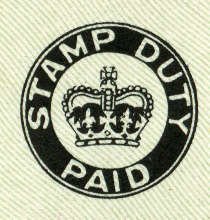
The "Stamp Duty Paid" mark that appeared on British cheques from 1956 to 1971
Methods of cancellationMain article: Fiscal cancel
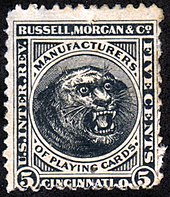

A lettre de cachet of 1703 (reign of Louis XIV), opening De par le roy ("In the name of the King...") 
Wood engraving published in The Illustrated Australian News, depicting a public demonstration of new technology at the Royal Society of Victoria (Melbourne, Australia) on 8 August 1878.
https://en.wikipedia.org/wiki/Phonograph
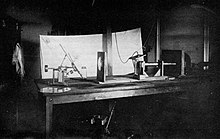
A rare 1884 laboratory photo showing the experimental recording of voice patterns by a photographic process (Smithsonian photo No. 44312-E)

Bell and Tainter's Photophone receiver, one part of the device to conduct optical telephony 
2 A 'G' (Graham Bell) model Graphophone being played back by a typist after it had previously recorded dictation 
The patent drawing for an early hand-powered non-magnetic tape recorder
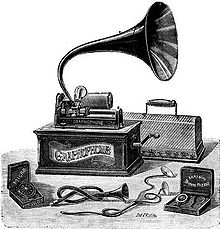
2A later-model Columbia Graphophone of 1901

Nelson's Column during the Great Smog

A railway workshop. 
Battersea Power Station in 1938
https://en.wikipedia.org/wiki/Great_Smog_of_London

A panorama of the City of London in 1616 by Claes Visscher. The tenement housing on London Bridge (far right) was a notorious death-trap in case of fire; much would be destroyed in a fire in 1633.[15] 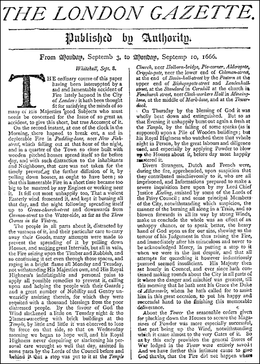
The London Gazette for 3–10 September, facsimile front page with an account of the Great Fire.
https://en.wikipedia.org/wiki/Great_Fire_of_London

Charlie Chaplin at the Ritz in 1921
https://en.wikipedia.org/wiki/The_Ritz_Hotel,_London

"Jack Black, Her Majesty's ratcatcher", from volume 3, pg. 11 (1851)

Moscow
https://en.wikipedia.org/wiki/Khrushchevka#/media/File:%D0%A1%D0%BF%D0%B0%D0%BB%D1%8C%D0%BD%D1%8B%D0%B9_%D1%80%D0%B0%D0%B9%D0%BE%D0%BD,_%D0%A5%D1%80%D1%83%D1%89%D0%B5%D0%B2%D0%BA%D0%B8_-_panoramio.jpg
Pre-war preparations and fears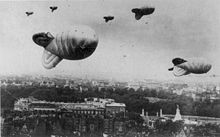
Barrage balloons flying over central London
Communal shelters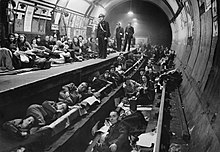
Aldwych tube station being used as a bomb shelter in 1940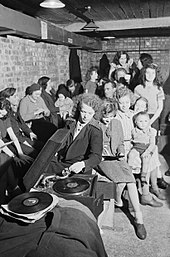
A young woman plays a gramophone in an air raid shelter in north London during 1940.
Office workers make their way to work through debris after a heavy air raid.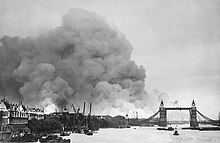
Smoke rising from fires in the London docks, following bombing on 7 September
The aftermath of a 9 September 1940 air raid on London 
Bomb damage to a street in Birmingham after an air raid
Firefighters tackling a blaze amongst ruined buildings after an air raid on London
Improvements in British defences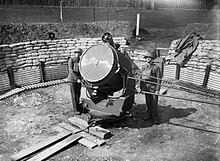
An anti-aircraft searchlight and crew at the Royal Hospital Chelsea, 17 April 1940
Night attacks
Coventry city centre following the 14/15 November 1940 raid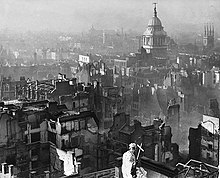
View from St. Paul's Cathedral after the Blitz
Strategic or "terror" bombing
See also: Organization of the Luftwaffe 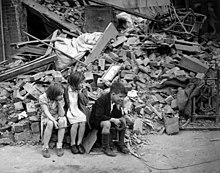
Children in the East End of London, made homeless by the Blitz
Liverpool city centre after heavy bombing
Firefighters at work amongst burning buildings, during the large raid of 10/11 May 
People in London look at a map illustrating how the RAF is striking back at Germany during 1940
Legacy, propaganda and memory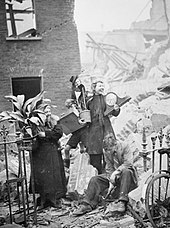
Women salvaging possessions from their bombed house, including plants and a clock
https://en.wikipedia.org/wiki/The_Blitz
The Blitz
Part of the Strategic bombing campaign of World War II
A Heinkel He 111 bomber over the Surrey Commercial Docks in South London and Wapping and the Isle of Dogs in the East End of London on 7 September 1940
https://en.wikipedia.org/wiki/The_Blitz 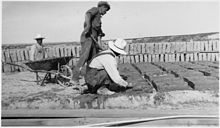
Brick making at the beginning of the 20th century
https://en.wikipedia.org/wiki/Brick

A coal-fired power plant in Luchegorsk, Russia. A carbon tax would tax the CO2 emitted from the power station. ![]()
Pixel Slate with keyboard

View of the summit of Black Rock Mountain in the far distance.

A panorama after the 1906 San Francisco earthquake.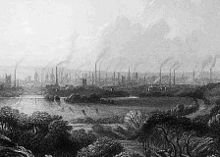
Smokestacks in Manchester, England c. 1858 watercolor by William Wyld
https://en.wikipedia.org/wiki/Chimney

A fender (colorized) is set in front of the fireplace to contain embers, soot and ash
https://en.wikipedia.org/wiki/Fireplace 
View from southwest, East Martin Street entrance and west party wall – Barber-Towler Building (Commercial Building), 123 East Martin Street, Raleigh, Wake County, North Carolina
https://en.wikipedia.org/wiki/Party_wall

The Manufacture of Iron -- Filling the Furnace, an 1873 wood engraving
High-temperature reusable surface insulation (HRSI)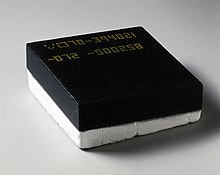
An HRSI tile. Note the yellow markings, which denote its exact location on the orbiter.
Heat treatment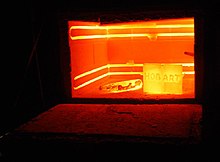
Heat treating furnace at 1,800 °F (980 °C)

Marble House in 1910 
Richard Porson's suggested reconstruction of the missing Greek text (1803) 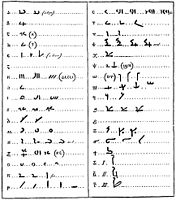
Johan David Åkerblad's table of Demotic phonetic characters and their Coptic equivalents (1802)

The Foundation Stone in the floor of the Dome of the Rock shrine in Jerusalem. The round hole at upper left penetrates to a small cave, known as the Well of Souls, below. The cage-like structure just beyond the hole covers the stairway entrance to the cave (south is towards the top of the image).

Black Rock granite formation
https://en.wikipedia.org/wiki/Black_Rock,_Cumberland_County 
Blackrock Castle

Blackrock Castle in the late 19th century
https://en.wikipedia.org/wiki/Blackrock_Castle

Larger Marble Palace. View from the Field of Mars

Kremlin Palace and churches. Early 1920s

https://en.wikipedia.org/wiki/Kazan_Kremlin

Wood Frog with albino phenotype
https://nikiyaantonbettey.blogspot.com/2023/05/05-22-2023-0204-albino.html
Stonnis Rocks
Gaia (E8 6c, 5.13a X) follows the groove on the outcrop at the left of the picture

The Seven Buildings in 1865.
https://en.wikipedia.org/wiki/Seven_Buildings
https://en.wikipedia.org/wiki/Egyptian_Revival_architecture
Gushee Family House
U.S. National Register of Historic Places
Gushee Family house in March, 1998
https://en.wikipedia.org/wiki/Gushee_Family_House
Everett McKinley Dirksen United States Courthouse
The Chicago Federal Center designed by Mies van der Rohe, includes the Dirksen Courthouse, at left.
https://en.wikipedia.org/wiki/Everett_McKinley_Dirksen_United_States_Courthouse
President's House
The House intended for the President of the United States, in Ninth Street Philadelphia,
by W. Birch & Son (1799)https://en.wikipedia.org/wiki/President%27s_House_(Ninth_Street)
ETH Zurich
Eidgenössische Technische Hochschule (ETH) Zürich
Other names Swiss Federal Institute of Technology in Zurich, German: Polytechnikum (colloquially)
https://en.wikipedia.org/wiki/ETH_Zurich
Belvidere
U.S. National Register of Historic Places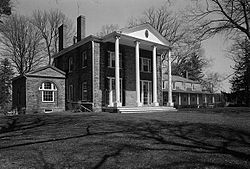
HABS Photo of Belvidere, May 1967
https://en.wikipedia.org/wiki/Belvidere_(Belmont,_New_York)
Van Dorn House
U.S. National Register of Historic Places
https://en.wikipedia.org/wiki/Van_Dorn_House
Wye House
U.S. National Register of Historic Places
U.S. National Historic Landmark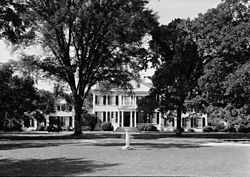
Wye House mansion, seen from the front lawn
https://en.wikipedia.org/wiki/Wye_House
Federal Register
Cover
Type Daily official journal
Publisher Office of the Federal Register
Founded July 26, 1935
Language English
Headquarters United States
ISSN 0097-6326
OCLC number 1768512
Website archives.gov/federal-register
Free online archives federalregister.gov
Administrative law of the United States
General
Rulemaking Notice of proposed rulemaking
Adjudication Administrative law judge
Code of Federal Regulations
Federal Register
Statutory framework
Administrative Procedure Act
Freedom of Information Act
NEPA
GSA
NEA
IGA
RFA
PRA
UMRA
CRA
FVRA
Policy coordination
Office of Information and Regulatory Affairs
Administrative Conference
Executive orders
Cost–benefit analysis (Executive Order 12866)
Judicial review of agency action
Arbitrary and capricious State Farm
Chevron deference Auer deference
Committed to agency discretion
Due process Bi-Metallic
Goldberg
Mathews
Exhaustion
Major question doctrine
National injunction
Ripeness Abbott Labs
Standing Lujan
U.S. Court of Appeals for the D.C. Circuit
Separation of powers
Appointments Clause Freytag
Noel Canning
Congressional oversight Authorization Organic statute
Appropriation
Hearings
Senate confirmation
Independent agencies Humphrey's
Seila
Unitary executive theory
Legislative veto Chadha
Nondelegation
Related areas of law (and agencies)
Antitrust and competition FTC
CPSC
CFPB
Banking Treasury OCC
FDIC
FRB
Communication FCC
Energy DOE
FERC
Environment EPA
FWS
Food FDA
CDC
Health care HHS
Immigration DHS
EOIR
Labor DOL
NLRB
Patent/trademark PTO
Securities SEC
CFTC
Taxation IRS
TC
Trade DOC
ITC
Transportation DOT
STB
NTSB
Social Security SSA
Related topics
Constitutional law
Statutory interpretation
v
t
e
The Federal Register (FR or sometimes Fed. Reg.) is the official journal of the federal government of the United States that contains government agency rules, proposed rules, and public notices.[1] It is published every weekday, except on federal holidays. The final rules promulgated by a federal agency and published in the Federal Register are ultimately reorganized by topic or subject matter and codified in the Code of Federal Regulations (CFR), which is updated quarterly.[2]
The Federal Register is compiled by the Office of the Federal Register (within the National Archives and Records Administration) and is printed by the Government Publishing Office. There are no copyright restrictions on the Federal Register; as a work of the U.S. government, it is in the public domain.[3]
https://en.wikipedia.org/wiki/Federal_Register
Selma Plantation House
U.S. National Register of Historic Places
https://en.wikipedia.org/wiki/Selma_Plantation
Chicago Federal Building
The Chicago Federal Building looking southwest from Adams and Dearborn Streets with the Chicago Board of Trade Building visible behind the dome
https://en.wikipedia.org/wiki/Chicago_Federal_Building
Wessyngton
U.S. National Register of Historic Places
https://en.wikipedia.org/wiki/Wessyngton_(Cedar_Hill,_Tennessee)
James Butler House
U.S. National Register of Historic Places
https://en.wikipedia.org/wiki/James_Butler_House
Elmhurst
U.S. National Register of Historic Places
Elmhurst, April 2012
https://en.wikipedia.org/wiki/Elmhurst_(Connersville,_Indiana)

View of shoppers on Getreidegasse, which is one of the oldest streets in Salzburg
https://en.wikipedia.org/wiki/Salzburg#Architecture
101 Federal Street
View from the street
https://en.wikipedia.org/wiki/101_Federal_Street
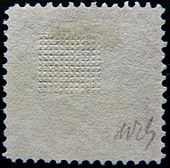
"G" grill on an 1869 issue
https://en.wikipedia.org/wiki/Postage_stamps_and_postal_history_of_the_United_States
Graf Zeppelin stamps
65-cent "Zeppelin" of 1930, issued in April for the May–June Pan-American flight of the Graf Zeppelin
https://en.wikipedia.org/wiki/Postage_stamps_and_postal_history_of_the_United_States
American Flag, 1963
https://en.wikipedia.org
/wiki/Postage_stamps_and_postal_history_of_the_United_States
https://en.wikipedia.org/wiki/Postage_stamps_and_postal_history_of_the_United_States
https://en.wikipedia.org/wiki/American_Letter_Mail_Company
https://en.wikipedia.org/wiki/American_Postal_Workers_Union
https://en.wikipedia.org/wiki/Board_of_Governors_of_the_United_States_Postal_Service
https://en.wikipedia.org/wiki/Bureau_of_Transportation
https://en.wikipedia.org/wiki/United_States_Postal_Service_Office_of_Inspector_General
https://en.wikipedia.org/wiki/Postal_Transportation_Service
https://en.wikipedia.org/wiki/Delivery_Bar_Code_Sorter
https://en.wikipedia.org/wiki/Flats_Sequencing_System
https://en.wikipedia.org/wiki/Railway_Mail_Service_library
https://en.wikipedia.org/wiki/Postal_Alpha_Numeric_Encoding_Technique
https://en.wikipedia.org/wiki/Postal_Clause
https://en.wikipedia.org/wiki/1930_Graf_Zeppelin_stamps
https://en.wikipedia.org/wiki/Inverted_Jenny
https://en.wikipedia.org/wiki/List_of_United_States_airmail_stamps
https://en.wikipedia.org/wiki/1918_Curtiss_Jenny_airmail_stamps
https://en.wikipedia.org/wiki/CIA_invert
https://en.wikipedia.org/wiki/Pan-American_invert
https://en.wikipedia.org/wiki/Fancy_cancel
https://en.wikipedia.org/wiki/Provisional_stamp
https://en.wikipedia.org/wiki/Postmark
https://en.wikipedia.org/wiki/Benjamin_Miller_Collection
https://en.wikipedia.org/wiki/Air_Mail_Act_of_1925
https://en.wikipedia.org/wiki/Butterfield_Overland_Mail
https://en.wikipedia.org/wiki/United_States_Post_Office_Department
https://en.wikipedia.org/wiki/Railway_Mail_Service
https://en.wikipedia.org/wiki/Higgins_%26_Gage_World_Postal_Stationery_Catalog
https://en.wikipedia.org/wiki/Scott_catalogue
https://en.wikipedia.org/wiki/ABCorp
https://en.wikipedia.org/wiki/Bureau_of_Engraving_and_Printing#Postage_stamp_production
https://en.wikipedia.org/wiki/Category:American_philatelists

The Penny Red was used in the UK for many years (1841–1879), and comes in hundreds of variations which are subject to detailed study by philatelists. 
Zeppelin mail from Gibraltar to Rio de Janeiro, Brazil via Berlin on the Christmas flight (12th South American flight) of 1934
Philately (/fɪˈlætəli/; fih-LAT-ə-lee) is the study of postage stamps and postal history.[citation needed] It also refers to the collection and appreciation of stamps and other philatelic products. Philately involves more than just stamp collecting or the study of postage; it is possible to be a philatelist without owning any stamps.[1] For instance, the stamps being studied may be very rare or reside only in museums.
https://en.wikipedia.org/wiki/Philately
From Wikipedia, the free encyclopedia
For the taxonomic method, see DNA barcoding. For a code of conduct for barristers, see Legal ethics. 
A UPC-A barcode
A barcode or bar code is a method of representing data in a visual, machine-readable form. Initially, barcodes represented data by varying the widths, spacings and sizes of parallel lines. These barcodes, now commonly referred to as linear or one-dimensional (1D), can be scanned by special optical scanners, called barcode readers, of which there are several types. Later, two-dimensional (2D) variants were developed, using rectangles, dots, hexagons and other patterns, called matrix codes or 2D barcodes, although they do not use bars as such. 2D barcodes can be read using purpose-built 2D optical scanners, which exist in a few different forms. 2D barcodes can also be read by a digital camera connected to a microcomputer running software that takes a photographic image of the barcode and analyzes the image to deconstruct and decode the 2D barcode. A mobile device with a built-in camera, such as smartphone, can function as the latter type of 2D barcode reader using specialized application software (The same sort of mobile device could also read 1D barcodes, depending on the application software). 
Barcoded rolling stock in the UK, 1962
The barcode was invented by Norman Joseph Woodland and Bernard Silver and patented in the US in 1952.[1] The invention was based on Morse code[2] that was extended to thin and thick bars. However, it took over twenty years before this invention became commercially successful. UK magazine Modern Railways December 1962 pages 387–389 record how British Railways had already perfected a barcode-reading system capable of correctly reading rolling stock travelling at 100 mph (160 km/h) with no mistakes. An early use of one type of barcode in an industrial context was sponsored by the Association of American Railroads in the late 1960s. Developed by General Telephone and Electronics (GTE) and called KarTrak ACI (Automatic Car Identification), this scheme involved placing colored stripes in various combinations on steel plates which were affixed to the sides of railroad rolling stock. Two plates were used per car, one on each side, with the arrangement of the colored stripes encoding information such as ownership, type of equipment, and identification number.[3] The plates were read by a trackside scanner located, for instance, at the entrance to a classification yard, while the car was moving past.[4] The project was abandoned after about ten years because the system proved unreliable after long-term use.[3]
Barcodes became commercially successful when they were used to automate supermarket checkout systems, a task for which they have become almost universal. The Uniform Grocery Product Code Council had chosen, in 1973, the barcode design developed by George Laurer. Laurer's barcode, with vertical bars, printed better than the circular barcode developed by Woodland and Silver.[5] Their use has spread to many other tasks that are generically referred to as automatic identification and data capture (AIDC). The first successful system using barcodes was in the UK supermarket group Sainsbury's in 1972 using shelf-mounted barcodes [6] which were developed by Plessey.[6] In June 1974, Marsh supermarket in Troy, Ohio used a scanner made by Photographic Sciences Corporation to scan the Universal Product Code (UPC) barcode on a pack of Wrigley's chewing gum.[7][5] QR codes, a specific type of 2D barcode, have recently become very popular due to the growth in smartphone ownership.[8]
Other systems have made inroads in the AIDC market, but the simplicity, universality and low cost of barcodes has limited the role of these other systems, particularly before technologies such as radio-frequency identification (RFID) became available after 1995.
History
This article duplicates the scope of other articles, specifically Universal Product Code#History. Please discuss this issue on the talk page and edit it to conform with Wikipedia's Manual of Style. (December 2013)
In 1948 Bernard Silver, a graduate student at Drexel Institute of Technology in Philadelphia, Pennsylvania, US overheard the president of the local food chain, Food Fair, asking one of the deans to research a system to automatically read product information during checkout.[9] Silver told his friend Norman Joseph Woodland about the request, and they started working on a variety of systems. Their first working system used ultraviolet ink, but the ink faded too easily and was expensive.[10]
Convinced that the system was workable with further development, Woodland left Drexel, moved into his father's apartment in Florida, and continued working on the system. His next inspiration came from Morse code, and he formed his first barcode from sand on the beach. "I just extended the dots and dashes downwards and made narrow lines and wide lines out of them."[10] To read them, he adapted technology from optical soundtracks in movies, using a 500-watt incandescent light bulb shining through the paper onto an RCA935 photomultiplier tube (from a movie projector) on the far side. He later decided that the system would work better if it were printed as a circle instead of a line, allowing it to be scanned in any direction.
On 20 October 1949, Woodland and Silver filed a patent application for "Classifying Apparatus and Method", in which they described both the linear and bull's eye printing patterns, as well as the mechanical and electronic systems needed to read the code. The patent was issued on 7 October 1952 as US Patent 2,612,994.[1] In 1951, Woodland moved to IBM and continually tried to interest IBM in developing the system. The company eventually commissioned a report on the idea, which concluded that it was both feasible and interesting, but that processing the resulting information would require equipment that was some time off in the future.
IBM offered to buy the patent, but the offer was not accepted. Philco purchased the patent in 1962 and then sold it to RCA sometime later.[10]
Collins at Sylvania
During his time as an undergraduate, David Jarrett Collins worked at the Pennsylvania Railroad and became aware of the need to automatically identify railroad cars. Immediately after receiving his master's degree from MIT in 1959, he started work at GTE Sylvania and began addressing the problem. He developed a system called KarTrak using blue, white and red reflective stripes attached to the side of the cars, encoding a four-digit company identifier and a six-digit car number.[10] Light reflected off the colored stripes was read by photomultiplier vacuum tubes.[11]
The Boston and Maine Railroad tested the KarTrak system on their gravel cars in 1961. The tests continued until 1967, when the Association of American Railroads (AAR) selected it as a standard, Automatic Car Identification, across the entire North American fleet. The installations began on 10 October 1967. However, the economic downturn and rash of bankruptcies in the industry in the early 1970s greatly slowed the rollout, and it was not until 1974 that 95% of the fleet was labeled. To add to its woes, the system was found to be easily fooled by dirt in certain applications, which greatly affected accuracy. The AAR abandoned the system in the late 1970s, and it was not until the mid-1980s that they introduced a similar system, this time based on radio tags.[12]
The railway project had failed, but a toll bridge in New Jersey requested a similar system so that it could quickly scan for cars that had purchased a monthly pass. Then the U.S. Post Office requested a system to track trucks entering and leaving their facilities. These applications required special retroreflector labels. Finally, Kal Kan asked the Sylvania team for a simpler (and cheaper) version which they could put on cases of pet food for inventory control.
Computer Identics Corporation
In 1967, with the railway system maturing, Collins went to management looking for funding for a project to develop a black-and-white version of the code for other industries. They declined, saying that the railway project was large enough, and they saw no need to branch out so quickly.
Collins then quit Sylvania and formed the Computer Identics Corporation.[10] As its first innovations, Computer Identics moved from using incandescent light bulbs in its systems, replacing them with helium–neon lasers, and incorporated a mirror as well, making it capable of locating a barcode up to a meter (3 feet) in front of the scanner. This made the entire process much simpler and more reliable, and typically enabled these devices to deal with damaged labels, as well, by recognizing and reading the intact portions.
Computer Identics Corporation installed one of its first two scanning systems in the spring of 1969 at a General Motors (Buick) factory in Flint, Michigan.[10] The system was used to identify a dozen types of transmissions moving on an overhead conveyor from production to shipping. The other scanning system was installed at General Trading Company's distribution center in Carlstadt, New Jersey to direct shipments to the proper loading bay.
Universal Product Code
Main article: Universal Product Code
In 1966, the National Association of Food Chains (NAFC) held a meeting on the idea of automated checkout systems. RCA, who had purchased the rights to the original Woodland patent, attended the meeting and initiated an internal project to develop a system based on the bullseye code. The Kroger grocery chain volunteered to test it.
In the mid-1970s, the NAFC established the Ad-Hoc Committee for U.S. Supermarkets on a Uniform Grocery-Product Code to set guidelines for barcode development. In addition, it created a symbol-selection subcommittee to help standardize the approach. In cooperation with consulting firm, McKinsey & Co., they developed a standardized 11-digit code for identifying products. The committee then sent out a contract tender to develop a barcode system to print and read the code. The request went to Singer, National Cash Register (NCR), Litton Industries, RCA, Pitney-Bowes, IBM and many others.[13] A wide variety of barcode approaches was studied, including linear codes, RCA's bullseye concentric circle code, starburst patterns and others.
In the spring of 1971, RCA demonstrated their bullseye code at another industry meeting. IBM executives at the meeting noticed the crowds at the RCA booth and immediately developed their own system. IBM marketing specialist Alec Jablonover remembered that the company still employed Woodland, and he established a new facility in Raleigh-Durham Research Triangle Park to lead development.
In July 1972, RCA began an 18-month test in a Kroger store in Cincinnati. Barcodes were printed on small pieces of adhesive paper, and attached by hand by store employees when they were adding price tags. The code proved to have a serious problem; the printers would sometimes smear ink, rendering the code unreadable in most orientations. However, a linear code, like the one being developed by Woodland at IBM, was printed in the direction of the stripes, so extra ink would simply make the code "taller" while remaining readable. So on 3 April 1973, the IBM UPC was selected as the NAFC standard. IBM had designed five versions of UPC symbology for future industry requirements: UPC A, B, C, D, and E.[14]
NCR installed a testbed system at Marsh's Supermarket in Troy, Ohio, near the factory that was producing the equipment. On 26 June 1974, Clyde Dawson pulled a 10-pack of Wrigley's Juicy Fruit gum out of his basket and it was scanned by Sharon Buchanan at 8:01 am. The pack of gum and the receipt are now on display in the Smithsonian Institution. It was the first commercial appearance of the UPC.[15]
In 1971, an IBM team was assembled for an intensive planning session, threshing out, 12 to 18 hours a day, how the technology would be deployed and operate cohesively across the system, and scheduling a roll-out plan. By 1973, the team were meeting with grocery manufacturers to introduce the symbol that would need to be printed on the packaging or labels of all of their products. There were no cost savings for a grocery to use it, unless at least 70% of the grocery's products had the barcode printed on the product by the manufacturer. IBM projected that 75% would be needed in 1975. Yet, although this was achieved, there were still scanning machines in fewer than 200 grocery stores by 1977.[16]
Economic studies conducted for the grocery industry committee projected over $40 million in savings to the industry from scanning by the mid-1970s. Those numbers were not achieved in that time-frame and some predicted the demise of barcode scanning. The usefulness of the barcode required the adoption of expensive scanners by a critical mass of retailers while manufacturers simultaneously adopted barcode labels. Neither wanted to move first and results were not promising for the first couple of years, with Business Week proclaiming "The Supermarket Scanner That Failed" in a 1976 article.[15][17]
On the other hand, experience with barcode scanning in those stores revealed additional benefits. The detailed sales information acquired by the new systems allowed greater responsiveness to customer habits, needs and preferences. This was reflected in the fact that about 5 weeks after installing barcode scanners, sales in grocery stores typically started climbing and eventually leveled off at a 10–12% increase in sales that never dropped off. There was also a 1–2% decrease in operating cost for those stores, and this enabled them to lower prices and thereby to increase market share. It was shown in the field that the return on investment for a barcode scanner was 41.5%. By 1980, 8,000 stores per year were converting.[16]
Sims Supermarkets were the first location in Australia to use barcodes, starting in 1979.[18]
Industrial adoption
In 1981, the United States Department of Defense adopted the use of Code 39 for marking all products sold to the United States military. This system, Logistics Applications of Automated Marking and Reading Symbols (LOGMARS), is still used by DoD and is widely viewed as the catalyst for widespread adoption of barcoding in industrial uses.[19]
Use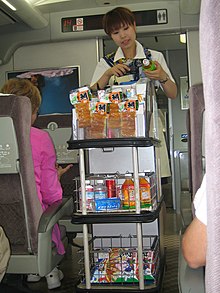
Snack vendor on the Shinkansen train scans a barcode. 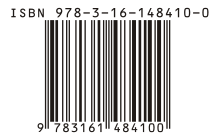
EAN-13 ISBN barcode 
Barcode on a patient identification wristband 
Barcoded parcel
Barcodes are widely used around the world in many contexts. In stores, UPC barcodes are pre-printed on most items other than fresh produce from a grocery store. This speeds up processing at check-outs and helps track items and also reduces instances of shoplifting involving price tag swapping, although shoplifters can now print their own barcodes.[20] Barcodes that encode a book's ISBN are also widely pre-printed on books, journals and other printed materials. In addition, retail chain membership cards use barcodes to identify customers, allowing for customized marketing and greater understanding of individual consumer shopping patterns. At the point of sale, shoppers can get product discounts or special marketing offers through the address or e-mail address provided at registration.
Barcodes are widely used in the healthcare and hospital settings, ranging from patient identification (to access patient data, including medical history, drug allergies, etc.) to creating SOAP Notes[21] with barcodes to medication management. They are also used to facilitate the separation and indexing of documents that have been imaged in batch scanning applications, track the organization of species in biology,[22] and integrate with in-motion checkweighers to identify the item being weighed in a conveyor line for data collection.
They can also be used to keep track of objects and people; they are used to keep track of rental cars, airline luggage, nuclear waste, registered mail, express mail and parcels. Barcoded tickets (which may be printed by the customer on their home printer, or stored on their mobile device) allow the holder to enter sports arenas, cinemas, theatres, fairgrounds, and transportation, and are used to record the arrival and departure of vehicles from rental facilities etc. This can allow proprietors to identify duplicate or fraudulent tickets more easily. Barcodes are widely used in shop floor control applications software where employees can scan work orders and track the time spent on a job.
Barcodes are also used in some kinds of non-contact 1D and 2D position sensors. A series of barcodes are used in some kinds of absolute 1D linear encoder. The barcodes are packed close enough together that the reader always has one or two barcodes in its field of view. As a kind of fiducial marker, the relative position of the barcode in the field of view of the reader gives incremental precise positioning, in some cases with sub-pixel resolution. The data decoded from the barcode gives the absolute coarse position. An "address carpet", used in digital paper, such as Howell's binary pattern and the Anoto dot pattern, is a 2D barcode designed so that a reader, even though only a tiny portion of the complete carpet is in the field of view of the reader, can find its absolute X,Y position and rotation in the carpet.[23][24]
2D barcodes can embed a hyperlink to a web page. A mobile device with a built-in camera might be used to read the pattern and browse the linked website, which can help a shopper find the best price for an item in the vicinity. Since 2005, airlines use an IATA-standard 2D barcode on boarding passes (Bar Coded Boarding Pass (BCBP)), and since 2008 2D barcodes sent to mobile phones enable electronic boarding passes.[25]
Some applications for barcodes have fallen out of use. In the 1970s and 1980s, software source code was occasionally encoded in a barcode and printed on paper (Cauzin Softstrip and Paperbyte[26] are barcode symbologies specifically designed for this application), and the 1991 Barcode Battler computer game system used any standard barcode to generate combat statistics.
Artists have used barcodes in art, such as Scott Blake's Barcode Jesus, as part of the post-modernism movement.
Symbologies
The mapping between messages and barcodes is called a symbology. The specification of a symbology includes the encoding of the message into bars and spaces, any required start and stop markers, the size of the quiet zone required to be before and after the barcode, and the computation of a checksum.
Linear symbologies can be classified mainly by two properties: Continuous vs. discrete Characters in discrete symbologies are composed of n bars and n − 1 spaces. There is an additional space between characters, but it does not convey information, and may have any width as long as it is not confused with the end of the code.
Characters in continuous symbologies are composed of n bars and n spaces, and usually abut, with one character ending with a space and the next beginning with a bar, or vice versa. A special end pattern that has bars on both ends is required to end the code. Two-width vs. many-width A two-width, also called a binary bar code, contains bars and spaces of two widths, "wide" and "narrow". The precise width of the wide bars and spaces is not critical; typically, it is permitted to be anywhere between 2 and 3 times the width of the narrow equivalents.
Some other symbologies use bars of two different heights (POSTNET), or the presence or absence of bars (CPC Binary Barcode). These are normally also considered binary bar codes.
Bars and spaces in many-width symbologies are all multiples of a basic width called the module; most such codes use four widths of 1, 2, 3 and 4 modules.
Some symbologies use interleaving. The first character is encoded using black bars of varying width. The second character is then encoded by varying the width of the white spaces between these bars. Thus, characters are encoded in pairs over the same section of the barcode. Interleaved 2 of 5 is an example of this.
Stacked symbologies repeat a given linear symbology vertically.
The most common among the many 2D symbologies are matrix codes, which feature square or dot-shaped modules arranged on a grid pattern. 2D symbologies also come in circular and other patterns and may employ steganography, hiding modules within an image (for example, DataGlyphs).
Linear symbologies are optimized for laser scanners, which sweep a light beam across the barcode in a straight line, reading a slice of the barcode light-dark patterns. Scanning at an angle makes the modules appear wider, but does not change the width ratios. Stacked symbologies are also optimized for laser scanning, with the laser making multiple passes across the barcode.
In the 1990s development of charge-coupled device (CCD) imagers to read barcodes was pioneered by Welch Allyn. Imaging does not require moving parts, as a laser scanner does. In 2007, linear imaging had begun to supplant laser scanning as the preferred scan engine for its performance and durability.
2D symbologies cannot be read by a laser, as there is typically no sweep pattern that can encompass the entire symbol. They must be scanned by an image-based scanner employing a CCD or other digital camera sensor technology.
Barcode readers
Main article: Barcode reader 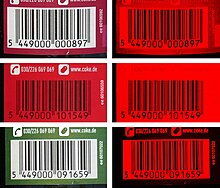
GTIN barcodes on Coca-Cola bottles. The images at right show how the laser of barcode readers "see" the images behind a red filter.
The earliest, and still[when?] the cheapest, barcode scanners are built from a fixed light and a single photosensor that is manually moved across the barcode. Barcode scanners can be classified into three categories based on their connection to the computer. The older type is the RS-232 barcode scanner. This type requires special programming for transferring the input data to the application program. Keyboard interface scanners connect to a computer using a PS/2 or AT keyboard–compatible adaptor cable (a "keyboard wedge"). The barcode's data is sent to the computer as if it had been typed on the keyboard.
Like the keyboard interface scanner, USB scanners do not need custom code for transferring input data to the application program. On PCs running Windows the human interface device emulates the data merging action of a hardware "keyboard wedge", and the scanner automatically behaves like an additional keyboard.
Most modern smartphones are able to decode barcode using their built-in camera. Google's mobile Android operating system can use their own Google Lens application to scan QR codes, or third-party apps like Barcode Scanner to read both one-dimensional barcodes and QR codes. Nokia's Symbian operating system featured a barcode scanner,[27] while mbarcode[28] is a QR code reader for the Maemo operating system. In Apple iOS 11, the native camera app can decode QR codes and can link to URLs, join wireless networks, or perform other operations depending on the QR Code contents.[29] Other paid and free apps are available with scanning capabilities for other symbologies or for earlier iOS versions.[30] With BlackBerry devices, the App World application can natively scan barcodes and load any recognized Web URLs on the device's Web browser. Windows Phone 7.5 is able to scan barcodes through the Bing search app. However, these devices are not designed specifically for the capturing of barcodes. As a result, they do not decode nearly as quickly or accurately as a dedicated barcode scanner or portable data terminal.[citation needed]
Quality control and verification
It is common for producers and users of bar codes to have a quality management system which includes verification and validation of bar codes.[31] Barcode verification examines scanability and the quality of the barcode in comparison to industry standards and specifications.[32] Barcode verifiers are primarily used by businesses that print and use barcodes. Any trading partner in the supply chain can test barcode quality. It is important to verify a barcode to ensure that any reader in the supply chain can successfully interpret a barcode with a low error rate. Retailers levy large penalties for non-compliant barcodes. These chargebacks can reduce a manufacturer's revenue by 2% to 10%.[33]
A barcode verifier works the way a reader does, but instead of simply decoding a barcode, a verifier performs a series of tests. For linear barcodes these tests are: Edge contrast (EC)[34] The difference between the space reflectance (Rs) and adjoining bar reflectance (Rb). EC=Rs-Rb
Minimum bar reflectance (Rb)[34] The smallest reflectance value in a bar.
Minimum space reflectance (Rs)[34] The smallest reflectance value in a space.
Symbol contrast (SC)[34] Symbol Contrast is the difference in reflectance values of the lightest space (including the quiet zone) and the darkest bar of the symbol. The greater the difference, the higher the grade. The parameter is graded as either A, B, C, D, or F. SC=Rmax-Rmin
Minimum edge contrast (ECmin)[34] The difference between the space reflectance (Rs) and adjoining bar reflectance (Rb). EC=Rs-Rb
Modulation (MOD)[34] The parameter is graded either A, B, C, D, or F. This grade is based on the relationship between minimum edge contrast (ECmin) and symbol contrast (SC). MOD=ECmin/SC The greater the difference between minimum edge contrast and symbol contrast, the lower the grade. Scanners and verifiers perceive the narrower bars and spaces to have less intensity than wider bars and spaces; the comparison of the lesser intensity of narrow elements to the wide elements is called modulation. This condition is affected by aperture size.
Inter-character gap[34] In discrete barcodes, the space that disconnects the two contiguous characters. When present, inter-character gaps are considered spaces (elements) for purposes of edge determination and reflectance parameter grades.
Defects
Decode[34] Extracting the information which has been encoded in a bar code symbol.
Decodability[34] Can be graded as A, B, C, D, or F. The Decodability grade indicates the amount of error in the width of the most deviant element in the symbol. The less deviation in the symbology, the higher the grade. Decodability is a measure of print accuracy using the symbology reference decode algorithm.
2D matrix symbols look at the parameters: Symbol contrast[34]
Modulation[34]
Decode[34]
Unused error correction
Fixed (finder) pattern damage
Grid non-uniformity
Axial non-uniformity[35]
Depending on the parameter, each ANSI test is graded from 0.0 to 4.0 (F to A), or given a pass or fail mark. Each grade is determined by analyzing the scan reflectance profile (SRP), an analog graph of a single scan line across the entire symbol. The lowest of the 8 grades is the scan grade, and the overall ISO symbol grade is the average of the individual scan grades. For most applications a 2.5 (C) is the minimal acceptable symbol grade.[36]
Compared with a reader, a verifier measures a barcode's optical characteristics to international and industry standards. The measurement must be repeatable and consistent. Doing so requires constant conditions such as distance, illumination angle, sensor angle and verifier aperture. Based on the verification results, the production process can be adjusted to print higher quality barcodes that will scan down the supply chain.
Bar code validation may include evaluations after use (and abuse) testing such as sunlight, abrasion, impact, moisture, etc.[37]
Barcode verifier standards
Barcode verifier standards are defined by the International Organization for Standardization (ISO), in ISO/IEC 15426-1 (linear) or ISO/IEC 15426-2 (2D).[citation needed] The current international barcode quality specification is ISO/IEC 15416 (linear) and ISO/IEC 15415 (2D).[citation needed] The European Standard EN 1635 has been withdrawn and replaced by ISO/IEC 15416. The original U.S. barcode quality specification was ANSI X3.182. (UPCs used in the US – ANSI/UCC5).[citation needed] As of 2011 the ISO workgroup JTC1 SC31 was developing a Direct Part Marking (DPM) quality standard: ISO/IEC TR 29158.[38]
Benefits
In point-of-sale management, barcode systems can provide detailed up-to-date information on the business, accelerating decisions and with more confidence. For example: Fast-selling items can be identified quickly and automatically reordered.
Slow-selling items can be identified, preventing inventory build-up.
The effects of merchandising changes can be monitored, allowing fast-moving, more profitable items to occupy the best space.
Historical data can be used to predict seasonal fluctuations very accurately.
Items may be repriced on the shelf to reflect both sale prices and price increases.
This technology also enables the profiling of individual consumers, typically through a voluntary registration of discount cards. While pitched as a benefit to the consumer, this practice is considered to be potentially dangerous by privacy advocates.[which?]
Besides sales and inventory tracking, barcodes are very useful in logistics and supply chain management. When a manufacturer packs a box for shipment, a Unique Identifying Number (UID) can be assigned to the box.
A database can link the UID to relevant information about the box; such as order number, items packed, quantity packed, destination, etc.
The information can be transmitted through a communication system such as Electronic Data Interchange (EDI) so the retailer has the information about a shipment before it arrives.
Shipments that are sent to a Distribution Center (DC) are tracked before forwarding. When the shipment reaches its final destination, the UID gets scanned, so the store knows the shipment's source, contents, and cost.
Barcode scanners are relatively low cost and extremely accurate compared to key-entry, with only about 1 substitution error in 15,000 to 36 trillion characters entered.[39][unreliable source?] The exact error rate depends on the type of barcode.
Types of barcodes
Linear barcodes
A first generation, "one dimensional" barcode that is made up of lines and spaces of various widths or sizes that create specific patterns.
Example Symbology Continuous or discrete Bar type Uses
 Australia Post barcode Discrete 4 bar heights An Australia Post barcode as used on a business reply paid envelope and applied by automated sorting machines to other mail when initially processed in fluorescent ink .
Australia Post barcode Discrete 4 bar heights An Australia Post barcode as used on a business reply paid envelope and applied by automated sorting machines to other mail when initially processed in fluorescent ink .
 Codabar Discrete Two Old format used in libraries and blood banks and on airbills (out of date, but still widely used in libraries)
Codabar Discrete Two Old format used in libraries and blood banks and on airbills (out of date, but still widely used in libraries)
Code 25 – Non-interleaved 2 of 5 Continuous Two Industrial
 Code 25 – Interleaved 2 of 5 Continuous Two Wholesale, libraries International standard ISO/IEC 16390
Code 25 – Interleaved 2 of 5 Continuous Two Wholesale, libraries International standard ISO/IEC 16390
 Code 11 Discrete Two Telephones (out of date)
Code 11 Discrete Two Telephones (out of date)
 Farmacode or Code 32 Discrete Two Italian pharmacode – use Code 39 (no international standard available)
Farmacode or Code 32 Discrete Two Italian pharmacode – use Code 39 (no international standard available)
 Code 39 Discrete Two Various – international standard ISO/IEC 16388
Code 39 Discrete Two Various – international standard ISO/IEC 16388
 Code 49 Continuous Many Various
Code 49 Continuous Many Various
 Code 93 Continuous Many Various
Code 93 Continuous Many Various
 Code 128 Continuous Many Various – International Standard ISO/IEC 15417
Code 128 Continuous Many Various – International Standard ISO/IEC 15417
CPC Binary Discrete Two
 DX film edge barcode Neither Tall/short Color print film
DX film edge barcode Neither Tall/short Color print film
 EAN 2 Continuous Many Addon code (magazines), GS1-approved – not an own symbology – to be used only with an EAN/UPC according to ISO/IEC 15420
EAN 2 Continuous Many Addon code (magazines), GS1-approved – not an own symbology – to be used only with an EAN/UPC according to ISO/IEC 15420
 EAN 5 Continuous Many Addon code (books), GS1-approved – not an own symbology – to be used only with an EAN/UPC according to ISO/IEC 15420
EAN 5 Continuous Many Addon code (books), GS1-approved – not an own symbology – to be used only with an EAN/UPC according to ISO/IEC 15420
 EAN-8, EAN-13 Continuous Many Worldwide retail, GS1-approved – International Standard ISO/IEC 15420
EAN-8, EAN-13 Continuous Many Worldwide retail, GS1-approved – International Standard ISO/IEC 15420
Facing Identification Mark Discrete Two USPS business reply mail
 GS1-128 (formerly named UCC/EAN-128), incorrectly referenced as EAN 128 and UCC 128 Continuous Many Various, GS1-approved – just an application of the Code 128 (ISO/IEC 15417) using the ANS MH10.8.2 AI Datastructures. It is not a separate symbology.
GS1-128 (formerly named UCC/EAN-128), incorrectly referenced as EAN 128 and UCC 128 Continuous Many Various, GS1-approved – just an application of the Code 128 (ISO/IEC 15417) using the ANS MH10.8.2 AI Datastructures. It is not a separate symbology.
 GS1 DataBar, formerly Reduced Space Symbology (RSS) Continuous Many Various, GS1-approved
GS1 DataBar, formerly Reduced Space Symbology (RSS) Continuous Many Various, GS1-approved
 Intelligent Mail barcode Discrete 4 bar heights United States Postal Service, replaces both POSTNET and PLANET symbols (formerly named OneCode)
Intelligent Mail barcode Discrete 4 bar heights United States Postal Service, replaces both POSTNET and PLANET symbols (formerly named OneCode)
 ITF-14 Continuous Two Non-retail packaging levels, GS1-approved – is just an Interleaved 2/5 Code (ISO/IEC 16390) with a few additional specifications, according to the GS1 General Specifications
ITF-14 Continuous Two Non-retail packaging levels, GS1-approved – is just an Interleaved 2/5 Code (ISO/IEC 16390) with a few additional specifications, according to the GS1 General Specifications
 ITF-6 Continuous Two Interleaved 2 of 5 barcode to encode an addon to ITF-14 and ITF-16 barcodes. The code is used to encode additional data such as items quantity or container weight
ITF-6 Continuous Two Interleaved 2 of 5 barcode to encode an addon to ITF-14 and ITF-16 barcodes. The code is used to encode additional data such as items quantity or container weight
 JAN Continuous Many Used in Japan, similar to and compatible with EAN-13 (ISO/IEC 15420)
JAN Continuous Many Used in Japan, similar to and compatible with EAN-13 (ISO/IEC 15420)
 Japan Post barcode Discrete 4 bar heights Japan Post
Japan Post barcode Discrete 4 bar heights Japan Post
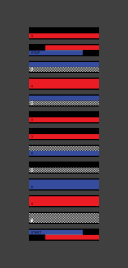 KarTrak ACI Discrete Coloured bars Used in North America on railroad rolling equipment
KarTrak ACI Discrete Coloured bars Used in North America on railroad rolling equipment
 MSI Continuous Two Used for warehouse shelves and inventory
MSI Continuous Two Used for warehouse shelves and inventory
 Pharmacode Discrete Two Pharmaceutical packaging (no international standard available)
Pharmacode Discrete Two Pharmaceutical packaging (no international standard available)
 PLANET Continuous Tall/short United States Postal Service (no international standard available)
PLANET Continuous Tall/short United States Postal Service (no international standard available)
 Plessey Continuous Two Catalogs, store shelves, inventory (no international standard available)
Plessey Continuous Two Catalogs, store shelves, inventory (no international standard available)
 PostBar Discrete 4 bar heights Canadian Post office
PostBar Discrete 4 bar heights Canadian Post office




 POSTNET Discrete Tall/short United States Postal Service (no international standard available)
POSTNET Discrete Tall/short United States Postal Service (no international standard available)
 RM4SCC / KIX Discrete 4 bar heights Royal Mail / PostNL
RM4SCC / KIX Discrete 4 bar heights Royal Mail / PostNL
 RM Mailmark C Discrete 4 bar heights Royal Mail
RM Mailmark C Discrete 4 bar heights Royal Mail
 RM Mailmark L Discrete 4 bar heights Royal Mail
RM Mailmark L Discrete 4 bar heights Royal Mail
 Spotify codes Discrete 23 bar heights Spotify codes point to artists, songs, podcasts, playlists, and albums. The information is encoded in the height of the bars,[40] so as long as the bar heights are maintained, the code can be handwritten and can vary in color.[41] Patented under EP3444755.
Spotify codes Discrete 23 bar heights Spotify codes point to artists, songs, podcasts, playlists, and albums. The information is encoded in the height of the bars,[40] so as long as the bar heights are maintained, the code can be handwritten and can vary in color.[41] Patented under EP3444755.
 Telepen Continuous Two Libraries (UK)
Telepen Continuous Two Libraries (UK)
 Universal Product Code (UPC-A and UPC-E) Continuous Many Worldwide retail, GS1-approved – International Standard ISO/IEC 15420
Universal Product Code (UPC-A and UPC-E) Continuous Many Worldwide retail, GS1-approved – International Standard ISO/IEC 15420
Matrix (2D) barcodes
A matrix code, also termed a 2D barcode (although not using bars as such) or simply a 2D code, is a two-dimensional way to represent information. It is similar to a linear (1-dimensional) barcode, but can represent more data per unit area.
Example Name Notes
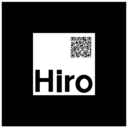 AR Code A type of marker used for placing content inside augmented reality applications. Some AR Codes can contain QR codes inside, so that AR content can be linked to.[42] See also ARTag.
AR Code A type of marker used for placing content inside augmented reality applications. Some AR Codes can contain QR codes inside, so that AR content can be linked to.[42] See also ARTag.
 Aztec Code Designed by Andrew Longacre at Welch Allyn (now Honeywell Scanning and Mobility). Public domain. – International Standard: ISO/IEC 24778
Aztec Code Designed by Andrew Longacre at Welch Allyn (now Honeywell Scanning and Mobility). Public domain. – International Standard: ISO/IEC 24778
 bCode A barcode designed for the study of insect behavior.[43] Encodes an 11 bit identifier and 16 bits of read error detection and error correction information. Predominantly used for marking honey bees, but can also be applied to other animals.
bCode A barcode designed for the study of insect behavior.[43] Encodes an 11 bit identifier and 16 bits of read error detection and error correction information. Predominantly used for marking honey bees, but can also be applied to other animals.
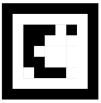 BEEtag A 25 bit (5x5) code matrix of black and white pixels that is unique to each tag surrounded by a white pixel border and a black pixel border. The 25-bit matrix consists of a 15-bit identity code, and a 10-bit error check.[44] It is designed to be a low-cost, image-based tracking system for the study of animal behavior and locomotion.
BEEtag A 25 bit (5x5) code matrix of black and white pixels that is unique to each tag surrounded by a white pixel border and a black pixel border. The 25-bit matrix consists of a 15-bit identity code, and a 10-bit error check.[44] It is designed to be a low-cost, image-based tracking system for the study of animal behavior and locomotion.
BeeTagg A 2D barcode with honeycomb structures suitable for mobile tagging and was developed by the Swiss company connvision AG.
Bokode A type of data tag which holds much more information than a barcode over the same area. They were developed by a team led by Ramesh Raskar at the MIT Media Lab. The bokode pattern is a tiled series of Data Matrix codes.
 Boxing A high-capacity 2D barcode is used on piqlFilm by Piql AS[45]
Boxing A high-capacity 2D barcode is used on piqlFilm by Piql AS[45]
Code 1 Public domain. Code 1 is currently used in the health care industry for medicine labels and the recycling industry to encode container content for sorting.[46]
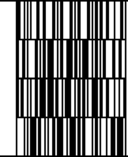 Code 16K The Code 16K (1988) is a multi-row bar code developed by Ted Williams at Laserlight Systems (USA) in 1992. In the US and France, the code is used in the electronics industry to identify chips and printed circuit boards. Medical applications in the USA are well known. Williams also developed Code 128, and the structure of 16K is based on Code 128. Not coincidentally, 128 squared happened to equal 16,000 or 16K for short. Code 16K resolved an inherent problem with Code 49. Code 49's structure requires a large amount of memory for encoding and decoding tables and algorithms. 16K is a stacked symbology.[47][48]
Code 16K The Code 16K (1988) is a multi-row bar code developed by Ted Williams at Laserlight Systems (USA) in 1992. In the US and France, the code is used in the electronics industry to identify chips and printed circuit boards. Medical applications in the USA are well known. Williams also developed Code 128, and the structure of 16K is based on Code 128. Not coincidentally, 128 squared happened to equal 16,000 or 16K for short. Code 16K resolved an inherent problem with Code 49. Code 49's structure requires a large amount of memory for encoding and decoding tables and algorithms. 16K is a stacked symbology.[47][48]
ColorCode ColorZip[49] developed colour barcodes that can be read by camera phones from TV screens; mainly used in Korea.[50]
Color Construct Code Color Construct Code is one of the few barcode symbologies designed to take advantage of multiple colors.[51][52]
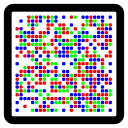 Cronto Visual Cryptogram The Cronto Visual Cryptogram (also called photoTAN) is a specialized color barcode, spun out from research at the University of Cambridge by Igor Drokov, Steven Murdoch, and Elena Punskaya.[53] It is used for transaction signing in e-banking; the barcode contains encrypted transaction data which is then used as a challenge to compute a transaction authentication number using a security token.[54]
Cronto Visual Cryptogram The Cronto Visual Cryptogram (also called photoTAN) is a specialized color barcode, spun out from research at the University of Cambridge by Igor Drokov, Steven Murdoch, and Elena Punskaya.[53] It is used for transaction signing in e-banking; the barcode contains encrypted transaction data which is then used as a challenge to compute a transaction authentication number using a security token.[54]
CyberCode From Sony.
d-touch readable when printed on deformable gloves and stretched and distorted[55][56]
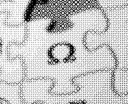 DataGlyphs From Palo Alto Research Center (also termed Xerox PARC).[57]
DataGlyphs From Palo Alto Research Center (also termed Xerox PARC).[57]
Patented.[58] DataGlyphs can be embedded into a half-tone image or background shading pattern in a way that is almost perceptually invisible, similar to steganography.[59][60]
 Data Matrix From Microscan Systems, formerly RVSI Acuity CiMatrix/Siemens. Public domain. Increasingly used throughout the United States. Single segment Data Matrix is also termed Semacode. – International Standard: ISO/IEC 16022.
Data Matrix From Microscan Systems, formerly RVSI Acuity CiMatrix/Siemens. Public domain. Increasingly used throughout the United States. Single segment Data Matrix is also termed Semacode. – International Standard: ISO/IEC 16022.
Datastrip Code From Datastrip, Inc.
Digimarc Barcode The Digimarc Barcode is a unique identifier, or code, based on imperceptible patterns that can be applied to marketing materials, including packaging, displays, ads in magazines, circulars, radio and television[61]
digital paper patterned paper used in conjunction with a digital pen to create handwritten digital documents. The printed dot pattern uniquely identifies the position coordinates on the paper.
 Dolby Digital Digital sound code for printing on cinematic film between the threading holes
Dolby Digital Digital sound code for printing on cinematic film between the threading holes
 DotCode Standardized as AIM Dotcode Rev 3.0. Public domain. Used to track individual cigarette and pharmaceutical packages.
DotCode Standardized as AIM Dotcode Rev 3.0. Public domain. Used to track individual cigarette and pharmaceutical packages.
Dot Code A Also known as Philips Dot Code.[62] Patented in 1988.[63]
DWCode Introduced by GS1 US and GS1 Germany, the DWCode is a unique, imperceptible data carrier that is repeated across the entire graphics design of a package[64]
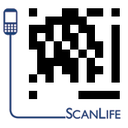 EZcode Designed for decoding by cameraphones;[65] from ScanLife.[66]
EZcode Designed for decoding by cameraphones;[65] from ScanLife.[66]
 Han Xin Barcode Barcode designed to encode Chinese characters introduced by Association for Automatic Identification and Mobility in 2011.
Han Xin Barcode Barcode designed to encode Chinese characters introduced by Association for Automatic Identification and Mobility in 2011.
 High Capacity Color Barcode HCCB was developed by Microsoft; licensed by ISAN-IA.
High Capacity Color Barcode HCCB was developed by Microsoft; licensed by ISAN-IA.
HueCode From Robot Design Associates. Uses greyscale or colour.[67]
InterCode From Iconlab, Inc. The standard 2D barcode in South Korea. All 3 South Korean mobile carriers put the scanner program of this code into their handsets to access mobile internet, as a default embedded program.
 JAB Code Just Another Bar Code is a colored 2D barcode. Square or rectangle. License free
JAB Code Just Another Bar Code is a colored 2D barcode. Square or rectangle. License free
 MaxiCode Used by United Parcel Service. Now public domain.
MaxiCode Used by United Parcel Service. Now public domain.
mCode Designed by NextCode Corporation, specifically to work with mobile phones and mobile services.[68] It is implementing an independent error detection technique preventing false decoding, it uses a variable-size error correction polynomial, which depends on the exact size of the code.[69]
MMCC Designed to disseminate high capacity mobile phone content via existing colour print and electronic media, without the need for network connectivity
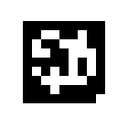 NexCode NexCode is developed and patented by S5 Systems.
NexCode NexCode is developed and patented by S5 Systems.
Nintendo e-Reader#Dot code Developed by Olympus Corporation to store songs, images, and mini-games for Game Boy Advance on Pokémon trading cards.
 PDF417 Originated by Symbol Technologies. Public domain. – International standard: ISO/IEC 15438
PDF417 Originated by Symbol Technologies. Public domain. – International standard: ISO/IEC 15438
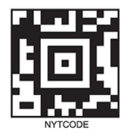 Qode American proprietary and patented 2D barcode from NeoMedia Technologies, Inc.[66]
Qode American proprietary and patented 2D barcode from NeoMedia Technologies, Inc.[66]
 QR code Initially developed, patented and owned by Denso Wave for automotive components management; they have chosen not to exercise their patent rights. Can encode Latin and Japanese Kanji and Kana characters, music, images, URLs, emails. De facto standard for Japanese cell phones. Used with BlackBerry Messenger to pick up contacts rather than using a PIN code. The most frequently used type of code to scan with smartphones, and one of the most widely used 2D barcodes.[70] Public Domain. – International Standard: ISO/IEC 18004
QR code Initially developed, patented and owned by Denso Wave for automotive components management; they have chosen not to exercise their patent rights. Can encode Latin and Japanese Kanji and Kana characters, music, images, URLs, emails. De facto standard for Japanese cell phones. Used with BlackBerry Messenger to pick up contacts rather than using a PIN code. The most frequently used type of code to scan with smartphones, and one of the most widely used 2D barcodes.[70] Public Domain. – International Standard: ISO/IEC 18004
Screencode Developed and patented[71][72] by Hewlett-Packard Labs. A time-varying 2D pattern using to encode data via brightness fluctuations in an image, for the purpose of high bandwidth data transfer from computer displays to smartphones via smartphone camera input. Inventors Timothy Kindberg and John Collomosse, publicly disclosed at ACM HotMobile 2008.[73]
 ShotCode Circular barcodes for camera phones. Originally from High Energy Magic Ltd in name Spotcode. Before that most likely termed TRIPCode.
ShotCode Circular barcodes for camera phones. Originally from High Energy Magic Ltd in name Spotcode. Before that most likely termed TRIPCode.
Snapcode, also called Boo-R code used by Snapchat, Spectacles, etc. US9111164B1[74][75][76]
Snowflake Code A proprietary code developed by Electronic Automation Ltd. in 1981. It is possible to encode more than 100 numeric digits in a space of only 5mm x 5mm. User selectable error correction allows up to 40% of the code to be destroyed and still remain readable. The code is used in the pharmaceutical industry and has an advantage that it can be applied to products and materials in a wide variety of ways, including printed labels, ink-jet printing, laser-etching, indenting or hole punching.[47][77][78]
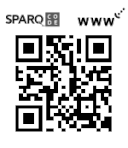 SPARQCode QR code encoding standard from MSKYNET, Inc.
SPARQCode QR code encoding standard from MSKYNET, Inc.
Trillcode Designed for mobile phone scanning.[79] Developed by Lark Computer, a Romanian company.[69]
VOICEYE Developed and patented by VOICEYE, Inc. in South Korea, it aims to allow blind and visually impaired people to access printed information. It also claims to be the 2D barcode that has the world's largest storage capacity.
Example imagesFirst, Second and Third Generation Barcodes

GTIN-12 number encoded in UPC-A barcode symbol. First and last digit are always placed outside the symbol to indicate Quiet Zones that are necessary for barcode scanners to work properly

EAN-13 (GTIN-13) number encoded in EAN-13 barcode symbol. First digit is always placed outside the symbol, additionally right quiet zone indicator (>) is used to indicate Quiet Zones that are necessary for barcode scanners to work properly

"Wikipedia" encoded in Code 93

"*WIKI39*" encoded in Code 39

'Wikipedia" encoded in Code 128

An example of a stacked barcode. Specifically a "Codablock" barcode.

PDF417 sample
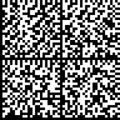
Lorem ipsum boilerplate text as four segment Data Matrix 2D

"This is an example Aztec symbol for Wikipedia" encoded in Aztec Code

Text 'EZcode'

High Capacity Color Barcode of the URL for Wikipedia's article on High Capacity Color Barcode

"Wikipedia, The Free Encyclopedia" in several languages encoded in DataGlyphs

Two different 2D barcodes used in film: Dolby Digital between the sprocket holes with the "Double-D" logo in the middle, and Sony Dynamic Digital Sound in the blue area to the left of the sprocket holes
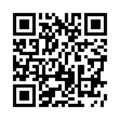
The QR Code for the Wikipedia URL. "Quick Response", the most popular 2D barcode. It is open in that the specification is disclosed and the patent is not exercised.[80]

MaxiCode example. This encodes the string "Wikipedia, The Free Encyclopedia"

ShotCode sample

detail of Twibright Optar scan from laser printed paper, carrying 32 kbit/s Ogg Vorbis digital music (48 seconds per A4 page)

A KarTrak railroad Automatic Equipment Identification label on a caboose in Florida
In popular culture
In architecture, a building in Lingang New City by German architects Gerkan, Marg and Partners incorporates a barcode design,[81] as does a shopping mall called Shtrikh-kod (Russian for barcode) in Narodnaya ulitsa ("People's Street") in the Nevskiy district of St. Petersburg, Russia.[82]
In media, in 2011, the National Film Board of Canada and ARTE France launched a web documentary entitled Barcode.tv, which allows users to view films about everyday objects by scanning the product's barcode with their iPhone camera.[83][84]
In professional wrestling, the WWE stable D-Generation X incorporated a barcode into their entrance video, as well as on a T-shirt.[85][86]
In the TV series Dark Angel, the protagonist and the other transgenics in the Manticore X-series have barcodes on the back of their necks.
In video games, the protagonist of the Hitman video game series has a barcode tattoo on the back of his head; QR codes can also be scanned in a side mission in Watch Dogs. The 2018 videogame Judgment features QR Codes that protagonist Takayuki Yagami can photograph with his phone camera. These are mostly to unlock parts for Yagami's Drone.[87]
In the films Back to the Future Part II and The Handmaid's Tale, cars in the future are depicted with barcode licence plates.
In the Terminator films, Skynet burns barcodes onto the inside surface of the wrists of captive humans (in a similar location to the WW2 concentration camp tattoos) as a unique identifier.
In music, Dave Davies of The Kinks released a solo album in 1980, AFL1-3603, which featured a giant barcode on the front cover in place of the musician's head. The album's name was also the barcode number.
The April 1978 issue of Mad Magazine featured a giant barcode on the cover, with the blurb "[Mad] Hopes this issue jams up every computer in the country...for forcing us to deface our covers with this yecchy UPC symbol from now on!"
Interactive Textbooks were first published by Harcourt College Publishers to Expand Education Technology with Interactive Textbooks.[88]
Designed barcodes
Some brands integrate custom designs into barcodes (while keeping them readable) on their consumer products. 



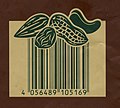
Hoaxes about barcodes
There was minor skepticism from conspiracy theorists, who considered barcodes to be an intrusive surveillance technology, and from some Christians, pioneered by a 1982 book The New Money System 666 by Mary Stewart Relfe, who thought the codes hid the number 666, representing the "Number of the Beast".[89] Old Believers, a separation of the Russian Orthodox Church, believe barcodes are the stamp of the Antichrist.[90] Television host Phil Donahue described barcodes as a "corporate plot against consumers".[91]
See also
Automated identification and data capture (AIDC)
Barcode printer
Campus card
European Article Numbering-Uniform Code Council
Global Trade Item Number
Identifier
Inventory control system
Object hyperlinking
Semacode
SMS barcode
SPARQCode (QR code)
List of GS1 country codes
References
US patent 2612994
"How Barcodes Work". Stuff You Should Know. 4 June 2019. Retrieved 5 June 2019.
Cranstone, Ian. "A guide to ACI (Automatic Car Identification)/KarTrak". Canadian Freight Cars A resource page for the Canadian Freight Car Enthusiast. Retrieved 26 May 2013.
Keyes, John (22 August 2003). "KarTrak". John Keyes Boston photoblogger. Images from Boston, New England, and beyond. John Keyes. Archived from the original on 10 March 2014. Retrieved 26 May 2013.
Roberts, Sam (11 December 2019). "George Laurer, Who Developed the Bar Code, Is Dead at 94". The New York Times. Retrieved 13 December 2019.
Brown, Derrick (19 January 2023). "Birth of the Barcode: a talk given to the Computer Conservation Society".
Fox, Margalit (15 June 2011). "Alan Haberman, Who Ushered in the Bar Code, Dies at 81". The New York Times.
G. F. (2 November 2017). "Why QR codes are on the rise". The Economist. Retrieved 5 February 2018.
Fishman, Charles (1 August 2001). "The Killer App – Bar None". American Way. Archived from the original on 12 January 2010. Retrieved 19 April 2010.
Seideman, Tony (Spring 1993), "Barcodes Sweep the World", Wonders of Modern Technology, archived from the original on 16 October 2016
Dunn, Peter (20 October 2015). "David Collins, SM '59: Making his mark on the world with bar codes". technologyreview.com. MIT. Retrieved 2 December 2019.
Graham-White, Sean (August 1999). "Do You Know Where Your Boxcar Is?". Trains. 59 (8): 48–53.
Laurer, George. "Development of the U.P.C. Symbol". Archived from the original on 25 September 2008.
Nelson, Benjamin (1997). Punched Cards To Bar Codes: A 200-year journey. Peterborough, N.H.: Helmers. ISBN 9780911261127.
Varchaver, Nicholas (31 May 2004). "Scanning the Globe". Fortune. Archived from the original on 14 November 2006. Retrieved 27 November 2006.
Selmeier, Bill (2009). Spreading the Barcode. Lulu. pp. 26, 214, 236, 238, 244, 245, 236, 238, 244, 245. ISBN 978-0-578-02417-2.
Rawsthorn, Alice (23 February 2010). "Scan Artists". New York Times. Retrieved 31 July 2015.
"World hails barcode on important birthday". ATN. 1 July 2014.
"A Short History of Bar Code". BarCode 1. Adams Communications. Retrieved 28 November 2011.
"Barcode". iWatch Systems. 2 May 2011. Retrieved 28 November 2011.
Oberfield, Craig. "QNotes Barcode System". US Patented #5296688. Quick Notes Inc. Retrieved 15 December 2012.
National Geographic, May 2010, page 30
Hecht, David L. (March 2001). "Printed Embedded Data Graphical User Interfaces" (PDF). IEEE Computer. Xerox Palo Alto Research Center. 34 (3): 47–55. doi:10.1109/2.910893. Archived from the original (PDF) on 3 June 2013.
Howell, Jon; Kotay, Keith (March 2000). "Landmarks for absolute localization" (PDF). Dartmouth Computer Science Technical Report TR2000-364. Archived from the original on 7 January 2016.
"IATA.org". IATA.org. 21 November 2011. Retrieved 28 November 2011.
"Paperbyte Bar Codes for Waduzitdo". Byte magazine. September 1978. p. 172.
"Nokia N80 Support". Nokia Europe. Archived from the original on 14 July 2011.
"package overview for mbarcode". Maemo.org. Retrieved 28 July 2010.
Sargent, Mikah (24 September 2017). "How to use QR codes in iOS 11". iMore. Retrieved 1 October 2017.
"15+ Best Barcode Scanner iPhone Applications". iPhoneness. 3 March 2017. Retrieved 1 October 2017.
David, H (28 November 2018), "Barcodes – Validation vs Verification in GS1", Labeling News, retrieved 6 June 2020
"Layman's Guide to ANSI, CEN, and ISO Barcode Print Quality Documents" (PDF). Association for Automatic Identification and Data Capture Technologies (AIM). 2002. Retrieved 23 November 2017.
Zieger, Anne (October 2003). "Retailer chargebacks: is there an upside? Retailer compliance initiatives can lead to efficiency". Frontline Solutions. Archived from the original on 8 July 2012.
Corp, Express. "Barcode Glossary | Express". Express Corp. Retrieved 11 December 2019.
Bar Code Verification Best Practice work team (May 2010). "GS1 DataMatrix: An introduction and technical overview of the most advanced GS1 Application Identifiers compliant symbology" (PDF). Global Standards 1. 1 (17): 34–36. Archived (PDF) from the original on 20 July 2011. Retrieved 2 August 2011.
GS1 Bar Code Verification Best Practice work team (May 2009). "GS1 Bar Code Verification for Linear Symbols" (PDF). Global Standards 1. 4 (3): 23–32. Retrieved 2 August 2011.
Garner, J (2019), Results of Data Matrix Barcode Testing for Field Applications, Oak Ridge National Laboratory, retrieved 6 June 2020
"Technical committees – JTC 1/SC 31 – Automatic identification and data capture techniques". ISO. Retrieved 28 November 2011.
Harmon, Craig K.; Adams, Russ (1989). Reading Between The Lines:An Introduction to Bar Code Technology. Peterborough, NH: Helmers. p. 13. ISBN 0-911261-00-1.
Boone, Peter (13 November 2020). "How do Spotify Codes work?". boonepeter.github.io. Retrieved 3 May 2023.
"Scan these new QR-style Spotify Codes to instantly play a song". TechCrunch. 5 May 2017. Retrieved 21 August 2022.
"AR Code Generator"
Gernat, Tim; Rao, Vikyath D.; Middendorf, Martin; Dankowicz, Harry; Goldenfeld, Nigel; Robinson, Gene E. (13 February 2018). "Automated monitoring of behavior reveals bursty interaction patterns and rapid spreading dynamics in honeybee social networks". Proceedings of the National Academy of Sciences. 115 (7): 1433–1438. Bibcode:2018PNAS..115.1433G. doi:10.1073/pnas.1713568115. ISSN 0027-8424. PMC 5816157. PMID 29378954.
Combes, Stacey A.; Mountcastle, Andrew M.; Gravish, Nick; Crall, James D. (2 September 2015). "BEEtag: A Low-Cost, Image-Based Tracking System for the Study of Animal Behavior and Locomotion". PLOS ONE. 10 (9): e0136487. Bibcode:2015PLoSO..1036487C. doi:10.1371/journal.pone.0136487. ISSN 1932-6203. PMC 4558030. PMID 26332211.
"GitHub - piql/Boxing: High capacity 2D barcode format". GitHub. 4 November 2021.
Adams, Russ (15 June 2009). "2-Dimensional Bar Code Page". Archived from the original on 7 July 2011. Retrieved 6 June 2011.
"2-Dimensional Bar Code Page". www.adams1.com. Retrieved 12 January 2019.
"Code 16K Specs" (PDF). www.gomaro.ch. Retrieved 12 January 2019.
"Colorzip.com". Colorzip.com. Retrieved 28 November 2011.
"Barcodes for TV Commercials". Adverlab. 31 January 2006. Retrieved 10 June 2009.
"About". Colour Code Technologies. Archived from the original on 29 August 2012. Retrieved 4 November 2012.
"Frequently Asked Questions". ColorCCode. Archived from the original on 21 February 2013. Retrieved 4 November 2012.
"New system to combat online banking fraud". University of Cambridge. 18 April 2013. Retrieved 21 January 2020.
Cronto Visual Transaction Signing, OneSpan, retrieved 6 December 2019
d-touch topological fiducial recognition, MIT, archived from the original on 2 March 2008.
d-touch markers are applied to deformable gloves, MIT, archived from the original on 21 June 2008.
See Xerox.com for details.
"DataGlyphs: Embedding Digital Data". Microglyphs. 3 May 2006. Retrieved 10 March 2014.
""DataGlyph" Embedded Digital Data". Tauzero. Retrieved 10 March 2014.
"DataGlyphs". Xerox. Retrieved 10 March 2014.
"Better Barcodes, Better Business" (PDF). Archived from the original (PDF) on 22 November 2016. Retrieved 19 June 2017.
Dot Code A at barcode.ro
Dot Code A Patent
"GS1 Germany and Digimarc Announce Collaboration to Bring DWCode to the German Market" (Press release).
"Scanbuy". Retrieved 28 November 2011.
Steeman, Jeroen. "Online QR Code Decoder". Archived from the original on 9 January 2014. Retrieved 9 January 2014.
"BarCode-1 2-Dimensional Bar Code Page". Adams. Archived from the original on 3 November 2008. Retrieved 10 June 2009.
"Global Research Solutions – 2D Barcodes". grs.weebly.com. Retrieved 12 January 2019.
Kato, Hiroko; Tan, Keng T.; Chai, Douglas (8 April 2010). Barcodes for Mobile Devices. Cambridge University Press. ISBN 9781139487511.
Chen, Rongjun; Yu, Yongxing; Xu, Xiansheng; Wang, Leijun; Zhao, Huimin; Tan, Hong-Zhou (11 December 2019). "Adaptive Binarization of QR Code Images for Fast Automatic Sorting in Warehouse Systems". Sensors. 19 (24): 5466. Bibcode:2019Senso..19.5466C. doi:10.3390/s19245466. PMC 6960674. PMID 31835866.
"US Patent 9270846: Content encoded luminosity modulation"
"US Patent 8180163: Encoder and decoder and methods of encoding and decoding sequence information with inserted monitor flags"
"Screen Codes: Visual Hyperlinks for Displays"
"Snapchat is changing the way you watch snaps and add friends"
"Snapchat Lets You Add People Via QR Snaptags Thanks To Secret Scan.me Acquisition"
"How Snapchat Made QR Codes Cool Again"
US 5825015, Chan, John Paul & GB, "Machine readable binary codes", issued 20 October 1998
"US Patent 5825015". pdfpiw.uspto.gov. 20 October 1998. Retrieved 12 January 2019.
"Trillcode Barcode". Barcoding, Inc. 17 February 2009. Retrieved 12 January 2019.
(株)デンソーウェーブ, denso-wave.com (in Japanese) Copyright
Barcode Halls – gmp Archived 18 October 2011 at the Wayback Machine
"image". Peterburg2.ru. Retrieved 28 November 2011.
Lavigne, Anne-Marie (5 October 2011). "Introducing Barcode.tv, a new interactive doc about the objects that surround us". NFB Blog. National Film Board of Canada. Retrieved 7 October 2011.
Anderson, Kelly (6 October 2011). "NFB, ARTE France launch 'Bar Code'". Reelscreen. Retrieved 7 October 2011.
[1] Archived 16 March 2015 at the Wayback Machine
"Dx theme song 2009–2010". YouTube. 19 December 2009. Archived from the original on 11 December 2021. Retrieved 10 March 2014.
Diego Agruello (27 June 2019). "Judgment QR code locations to upgrade Drone Parts explained • Eurogamer.net". Eurogamer. Retrieved 3 August 2019.
"CueCat History". CueCat History. Retrieved 12 November 2019.
"What about barcodes and 666: The Mark of the Beast?". Av1611.org. 1999. Retrieved 14 March 2014.
Serafino, Jay (26 July 2018). "The Russian Family That Cut Itself Off From Civilization for More Than 40 Years". Mental Floss. Retrieved 6 May 2020.
Bishop, Tricia (5 July 2004). "UPC bar code has been in use 30 years". SFgate.com. Archived from the original on 23 August 2004. Retrieved 22 December 2009.
Further reading
Automating Management Information Systems: Barcode Engineering and Implementation – Harry E. Burke, Thomson Learning, ISBN 0-442-20712-3
Automating Management Information Systems: Principles of Barcode Applications – Harry E. Burke, Thomson Learning, ISBN 0-442-20667-4
The Bar Code Book – Roger C. Palmer, Helmers Publishing, ISBN 0-911261-09-5, 386 pages
The Bar Code Manual – Eugene F. Brighan, Thompson Learning, ISBN 0-03-016173-8
Handbook of Bar Coding Systems – Harry E. Burke, Van Nostrand Reinhold Company, ISBN 978-0-442-21430-2, 219 pages
Information Technology for Retail:Automatic Identification & Data Capture Systems – Girdhar Joshi, Oxford University Press, ISBN 0-19-569796-0, 416 pages
Lines of Communication – Craig K. Harmon, Helmers Publishing, ISBN 0-911261-07-9, 425 pages
Punched Cards to Bar Codes – Benjamin Nelson, Helmers Publishing, ISBN 0-911261-12-5, 434 pages
Revolution at the Checkout Counter: The Explosion of the Bar Code – Stephen A. Brown, Harvard University Press, ISBN 0-674-76720-9
Reading Between The Lines – Craig K. Harmon and Russ Adams, Helmers Publishing, ISBN 0-911261-00-1, 297 pages
The Black and White Solution: Bar Code and the IBM PC – Russ Adams and Joyce Lane, Helmers Publishing, ISBN 0-911261-01-X, 169 pages
Sourcebook of Automatic Identification and Data Collection – Russ Adams, Van Nostrand Reinhold, ISBN 0-442-31850-2, 298 pages
Inside Out: The Wonders of Modern Technology – Carol J. Amato, Smithmark Pub, ISBN 0831746572, 1993
External links

Wikimedia Commons has media related to Barcode. Barcode at Curlie
v
t
e
Barcodes
v
t
e
Paper data storage media
Authority control: National ![]()
Germany
Israel
United States
Japan
Categories: Barcodes
Encodings
Automatic identification and data capture
1952 introductions
American inventions
Records management technology
https://en.wikipedia.org/wiki/Barcode
https://en.wikipedia.org/wiki/Category:Automatic_identification_and_data_capture
https://en.wikipedia.org/wiki/stream
Automatic identification and data capture (AIDC) refers to the methods of automatically identifying objects, collecting data about them, and entering them directly into computer systems, without human involvement. Technologies typically considered as part of AIDC include QR codes,[1] bar codes, radio frequency identification (RFID), biometrics (like iris and facial recognition system), magnetic stripes, optical character recognition (OCR), smart cards, and voice recognition. AIDC is also commonly referred to as "Automatic Identification", "Auto-ID" and "Automatic Data Capture".[2]
AIDC is the process or means of obtaining external data, particularly through the analysis of images, sounds, or videos. To capture data, a transducer is employed which converts the actual image or a sound into a digital file. The file is then stored and at a later time, it can be analyzed by a computer, or compared with other files in a database to verify identity or to provide authorization to enter a secured system. Capturing data can be done in various ways; the best method depends on application.
In biometric security systems, capture is the acquisition of or the process of acquiring and identifying characteristics such as finger image, palm image, facial image, iris print, or voiceprint which involves audio data, and the rest all involve video data.
Radio-frequency identification is relatively a new AIDC technology, which was first developed in the 1980s. The technology acts as a base in automated data collection, identification, and analysis systems worldwide. RFID has found its importance in a wide range of markets, including livestock identification and Automated Vehicle Identification (AVI) systems because of its capability to track moving objects. These automated wireless AIDC systems are effective in manufacturing environments where barcode labels could not survive.
https://en.wikipedia.org/wiki/Automatic_identification_and_data_capture
https://en.wikipedia.org/wiki/U.S._Philatelic_Classics_Society
https://en.wikipedia.org/wiki/Category:Philately_of_the_United_States
https://en.wikipedia.org/wiki/Digital_card
https://en.wikipedia.org/wiki/Plate_tectonics
https://en.wikipedia.org/wiki/Magnetosphere
https://en.wikipedia.org/wiki/scale
https://en.wikipedia.org/wiki/nuclear-rate
https://en.wikipedia.org/wiki/depth-location
https://en.wikipedia.org/wiki/rise-location
https://en.wikipedia.org/wiki/earth
https://en.wikipedia.org/wiki/pole-core-sea-sun-etc.
https://en.wikipedia.org/wiki/Ration_stamp
https://en.wikipedia.org/wiki/Stamp_duty
https://en.wikipedia.org/wiki/Revenue_stamp
https://en.wikipedia.org/wiki/Cheque
https://en.wikipedia.org/w/index.php?search=iron+stamp&title=Special:Search&ns0=1&searchToken=eki3bku5b7foi4f86e91jh6cx
https://en.wikipedia.org/wiki/Stamp_mill
https://en.wikipedia.org/wiki/Iron_Curtain
https://en.wikipedia.org/wiki/Cold_war
https://en.wikipedia.org/wiki/ISBN
https://en.wikipedia.org/wiki/Decoding
https://en.wikipedia.org/wiki/Laser
https://en.wikipedia.org/wiki/Lens
https://en.wikipedia.org/wiki/scale
https://en.wikipedia.org/wiki/flash-bomb-conversion-transform-process-procedure-equipment-mirrors-etc.-property-frequency-matching-pairing-manipulation-material-medium-environment-boolean-dual-systems-surroundings-env-modification-modualation-time-space-etc.
A hypogeum or hypogaeum (plural hypogea or hypogaea, pronounced /haɪpɒɡeɪə/; literally meaning "underground", from Greek hypo (under) and ghê (earth)[1]) is an underground temple or tomb.
Hypogea will often contain niches for cremated human remains or loculi for buried remains. Occasionally tombs of this type are referred to as built tombs.[2]
The term hypogeum can also refer to any antique building or part of building built below ground such as the series of tunnels under the Colosseum which held slaves (particularly enemy captives) and animals while keeping them ready to fight in the gladiatorial games. The animals and slaves could be let up through trapdoors under the sand-covered arena at any time during a fight.
Examples
An early example of a hypogeum is found at the Minoan Bronze Age site of Knossos on Crete. Hogan notes this underground vault was of a beehive shape and cut into the soft rock.[3] The Ħal Saflieni Hypogeum in Paola, Malta, is the oldest example of a prehistoric hypogeum, the earliest phase dating to 3600–3300 BC; it is a complex of underground chambers, halls and passages covering approximately 500 m2 (5,400 sq ft) on three levels, partly carved to imitate temple architecture and containing extensive prehistoric art.[4] In Larnaka, Cyprus—the Lefkaritis Tomb was discovered in 1999.[5]
Hypogea were also found in Dynastic Egypt, such as at the Northern Mazghuna pyramid, Southern Mazghuna pyramid and Southern South Saqqara pyramid. The hypogea in ancient Palmyra contained loculi closed with slabs bearing sculptured portrait reliefs, and sarcophagi with sculptured family banqueting scenes on their lids.
The later Christians built similar underground shrines, crypts and tombs, which they called catacombs. But this was only a difference in name, rather than purpose and rituals, and archaeological and historical research shows they were effectively the same. Werner Jacobsen wrote:
Like other ambitious Romans, the bishop-saints of the third and fourth centuries were usually buried in hypogea in the cemeteries outside the walls of their cities; often it was only miracles at their tombs that caused their successors to adopt more up-to-date designs. In Dijon the saint and bishop Benignus (d. c. 274) was buried in a large sarcophagus in a chamber tomb in the Roman cemetery. By the sixth century the tomb had long since fallen into disrepair and was regarded as pagan, even by Bishop Gregory of Langres.[6]
Hypogea were constructed across the pre-Columbian New World during the first millennium AD. Some of these tombs were over 10 meters in diameter and contained two or three free-standing columns, ornamental pilasters, and side chambers. The largest concentration of these hypogea are found in the National Archeological Park of Tierradentro, a UNESCO World Heritage Site in southwest Colombia.[7]
Other subterranean constructions
Other excavated structures, not used for ritual purposes, include the Greco-Roman cryptoporticus. Other cultures also have constructed underground structures, including the dugout, souterrain, yaodong, fogou, erdstall, and kiva.[citation needed]
Notes
two important built tombs, namely the Ikarou Street Tomb and the Lefkaritis Tomb were the primary reasons for the authoring of The Phoenician Period Necropolis of Kition Volume II.
- "National Archeological Park of Tierradentro". UNESCO World Heritage Centre. United Nations Educational, Scientific, and Cultural Organization. Retrieved 24 Apr 2021.
References
- Curl, James Stevens (2006). A Dictionary of Architecture and Landscape Architecture (Paperback) (Second ed.). Oxford University Press. p. 880. ISBN 0-19-860678-8.
External links
- Hypogeum of the Volumnis digital media archive (creative commons-licensed photos, laser scans, panoramas), data from a University of Ferrara/CyArk research partnership
| Chalcolithic Eneolithic, Aeneolithic, or Copper Age |
|---|
|
↑ Stone Age ↑ Neolithic |
|
|
|
|
|
↓ Bronze Age ↓ Iron Age |
| Chalcolithic Eneolithic, Aeneolithic, or Copper Age |
|---|
|
↑ Stone Age ↑ Neolithic |
|
|
|
|
|
↓ Bronze Age ↓ Iron Age |
| Part of a series on |
| Human history and prehistory |
|---|
| ↑ before Homo (Pliocene epoch) |
|
|
|
|
| ↓ Future (Holocene epoch) |
The Copper Age, also called the Chalcolithic (English: /ˌkælkəˈlɪθɪk/; from Greek: χαλκός khalkós, "copper" and λίθος líthos, "stone") or (A)eneolithic (from Latin aeneus "of copper"), is an archaeological period characterized by regular human manipulation of copper, but prior to the discovery of bronze alloys. Modern researchers consider the period as a subset of the broader Neolithic,[a] but earlier scholars defined it as a transitional period between the Neolithic and the Bronze Age. It is also considered the first phase, of three, in the Metal Ages.[2]
The archaeological site of Belovode, on Rudnik mountain in Serbia, has the world's oldest securely dated evidence of copper smelting at high temperature, from c. 5000 BC (7000 BP).[3] The transition from Copper Age to Bronze Age in Europe occurred between the late 5th and the late 3rd millennia BC. In the Ancient Near East the Copper Age covered about the same period, beginning in the late 5th millennium BC and lasting for about a millennium before it gave rise to the Early Bronze Age. Nevertheless, a study in the journal Antiquity from 2013 reported the discovery of a tin bronze foil from the Pločnik archaeological site dated to c. 4650 BC, as well as 14 other artefacts from Bulgaria and Serbia dated to before 4000 BC, showed that early tin bronze was more common than previously thought and developed independently in Europe 1,500 years before the first tin bronze alloys in the Near East. [4]
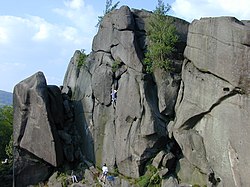



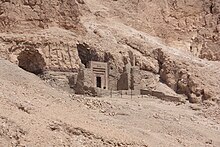




No comments:
Post a Comment